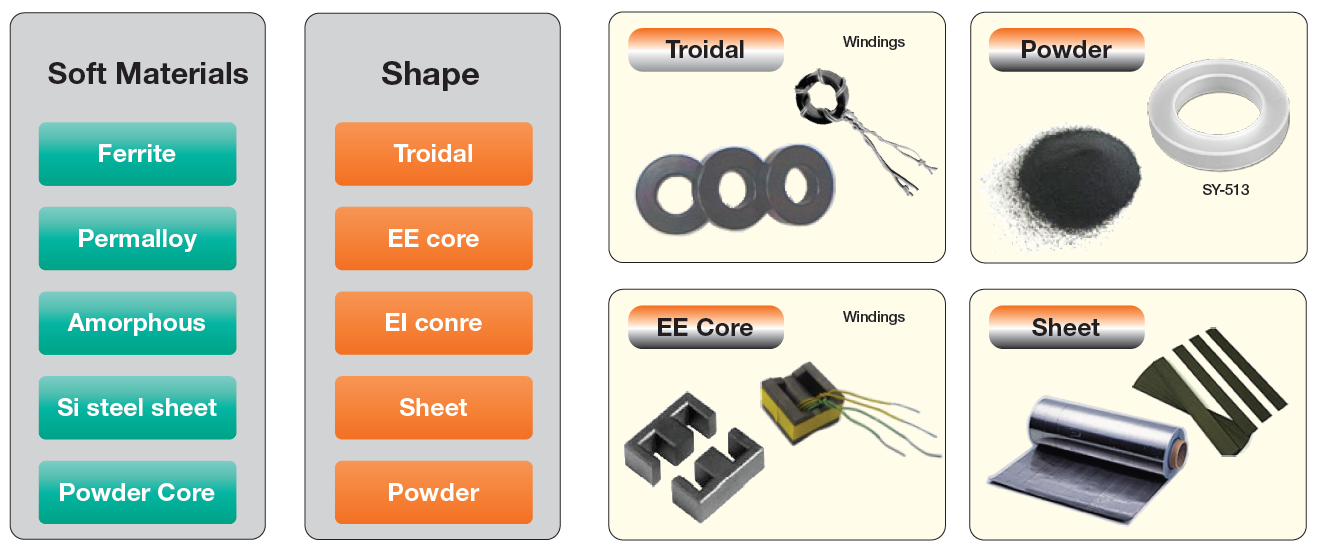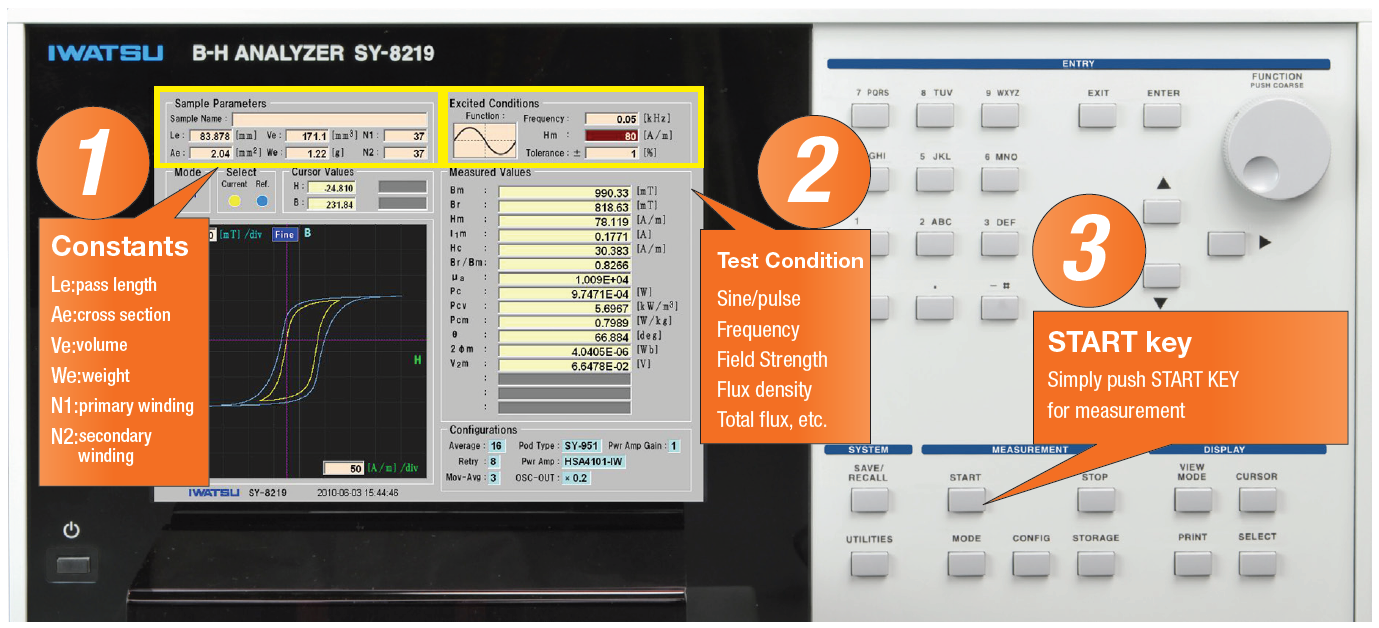New Products
- New launch of "Wide range thermostatic chamber scanner SY-330" compliant with automotive parts standard AEC-Q200 Grade 0
- De facto standard from research and development of soft magnetic materials to production inspection -
High-accuracy and high-precision core loss measurementsIWATSU's B-H analyzer uses the CROSS-POWER method (adopted in IEC62044-3) to achieve high-accuracy and high-precision measurements by integrating processing with low phase errors over the frequency spectrum and by compensating for the amplitude and phase characteristics of current sensing resistors and detection circuits.
After several model changes since its launch in 1984, IWATSU's B-H analyzer has steadily improved accuracy and precision, contributing to the further development of power electronics.

Features
- 10Hz to 10MHz wideband measurement frequencies(SY-8218)
- High power amplifier applied to maximum voltage ±150V, maximum current ±6A, up to 5MHz(SY-5001)
- Automatic measurement of temperature characteristics (-55ºC to +180ºC) of up to 4 samples compliant with automotive parts standard AEC-Q200 Grade 0 (SY-330)
- Automatic measurement of temperature characteristics (-30ºC to +150ºC) for up to 41 samples(SY-321A)
- Achieves the measurement of small piece single board samples with a length of 36mm or more (width of 35mm or less) (SY-956)
- Measurements with DC bias superimposed up to 30A are possible(SY-960/961/962)
You can measure the magnetic properties of various part shapes of various soft magnetic materials

Fully automatic measurement
The B-H curve is automatically acquired only by setting the sample parameters (effective magnetic path length, effective cross-sectional area, number of windings, etc.) and measurement conditions (frequency, maximum magnetic field, maximum magnetic flux density, maximum induced voltage, maximum excitation current), and various magnetic parameters are measured automatically.

Optional measurements are also fully automated
Options such as a thermostat scanner, a compact single-plate magnetic measurement device, and a DC bias tester can also be fully automatically controlled from the remote control software SY-810.

Thermostatic Chamber Scanner System

Compact Single-Plate Magnetic Measurement Device

DC Bias Tester
Measurements
Switching power supplies and DC-DC converters are using increasingly high switching frequencies in order to increase their compactness and efficiency. Transformers and choke coils used for these generally suffer increased losses due to higher frequencies. The cause of the loss is the core loss of the core material of these parts, which is mainly classified as hysteresis loss and eddy current loss, and sometimes the heat generated by these losses changes the magnetic properties of the core material itself, which may cause serious damage. The B-H analyzer is the only device that can measure the core loss of a wide range of soft magnets with high accuracy, from low frequencies to high frequencies in the MHz band.
B-H curve measurement
In magnetic materials, magnetic saturation due to the application is very important. Magnetic saturation can be known by measuring the B-H curve. If the B-H curve is saturated with the conditions you want to use, you can longer expect the material to act as an inductor.
The B-H analyzer is the only device that can measure the core loss of a wide range of B-H curves with high accuracy, from low frequencies to high frequencies in the MHz band under all conditions.
Magnetic permeability measurement
Core materials used for motors, actuators, and relays include silicon steel, soft steel, and permalloy. These materials are known to change their magnetic properties due to processing and heat treatment. The B-H analyzer is the only device capable of measuring magnetic properties, including the amplitude magnetic permeability of these components from low frequencies to high frequencies in the MHz band, and providing data on their impact on materials for processing and heat treatment.



